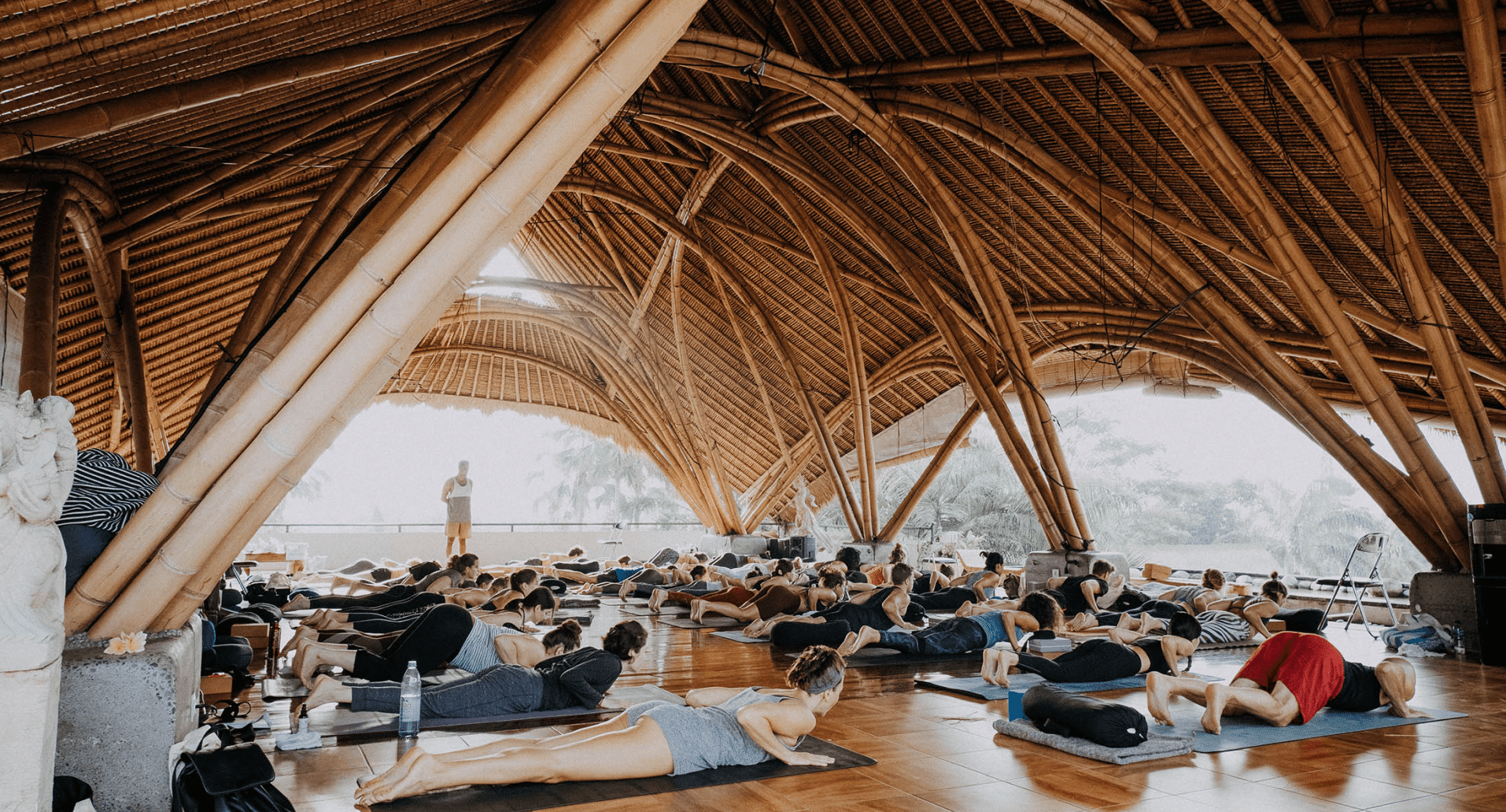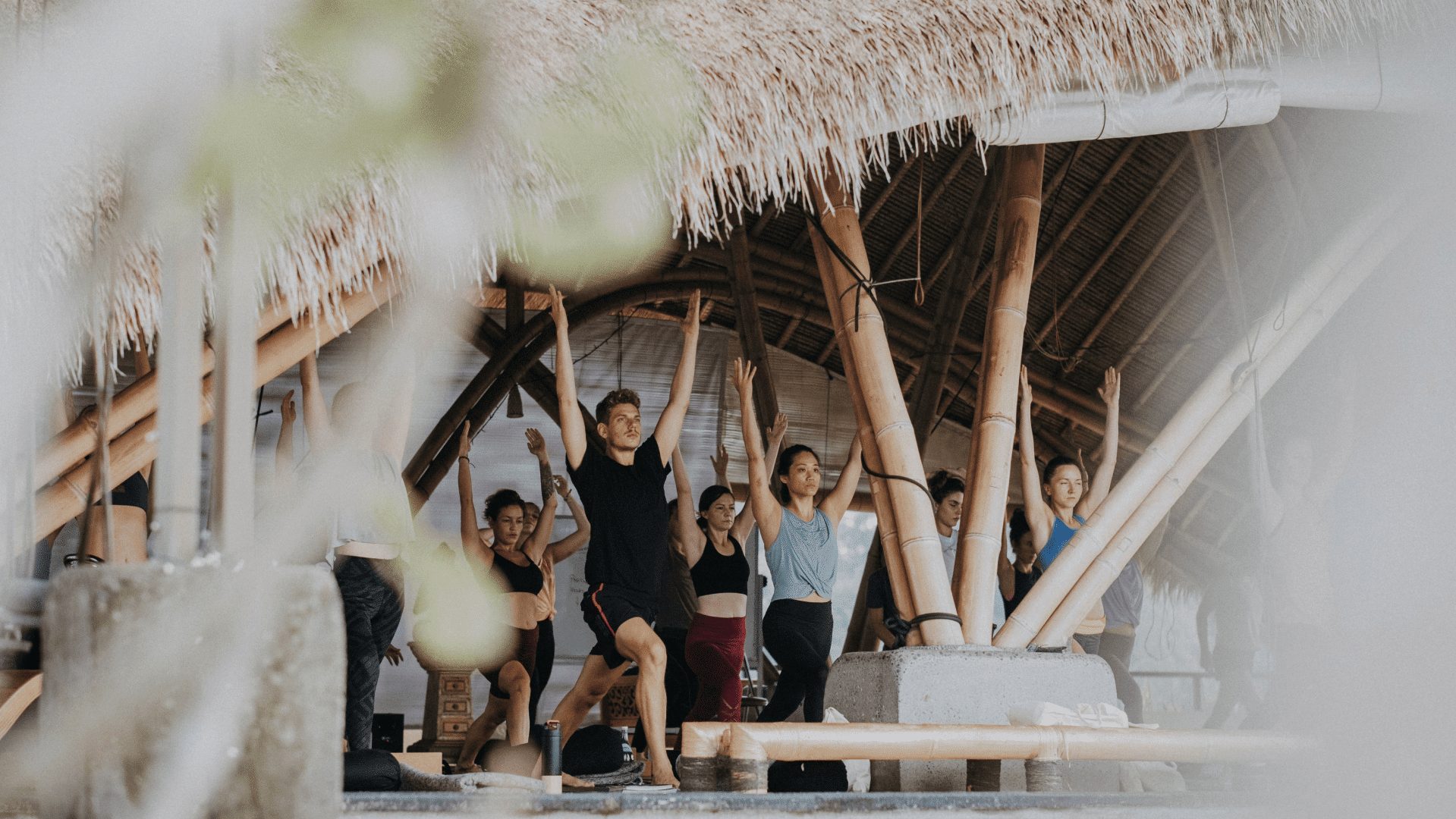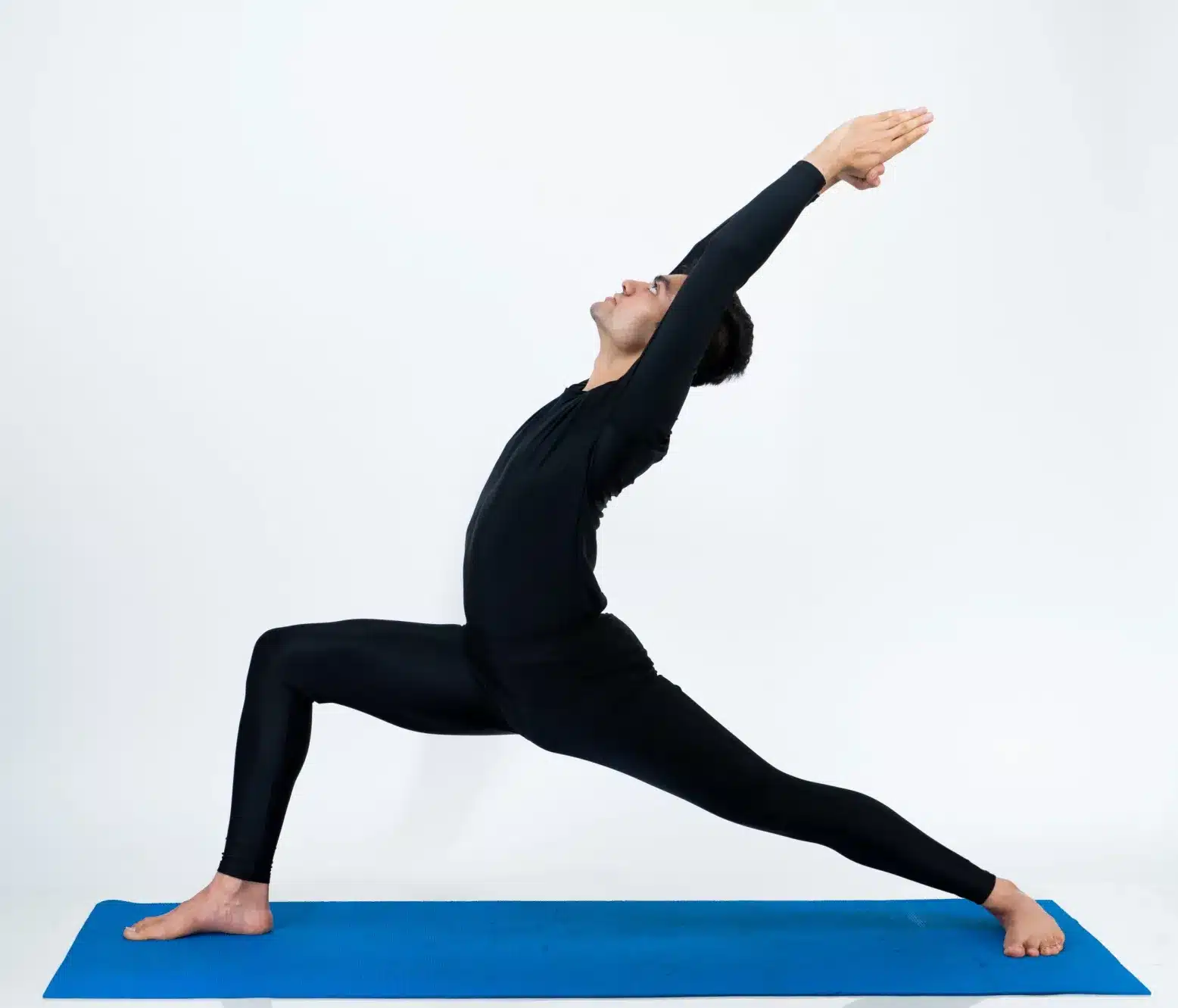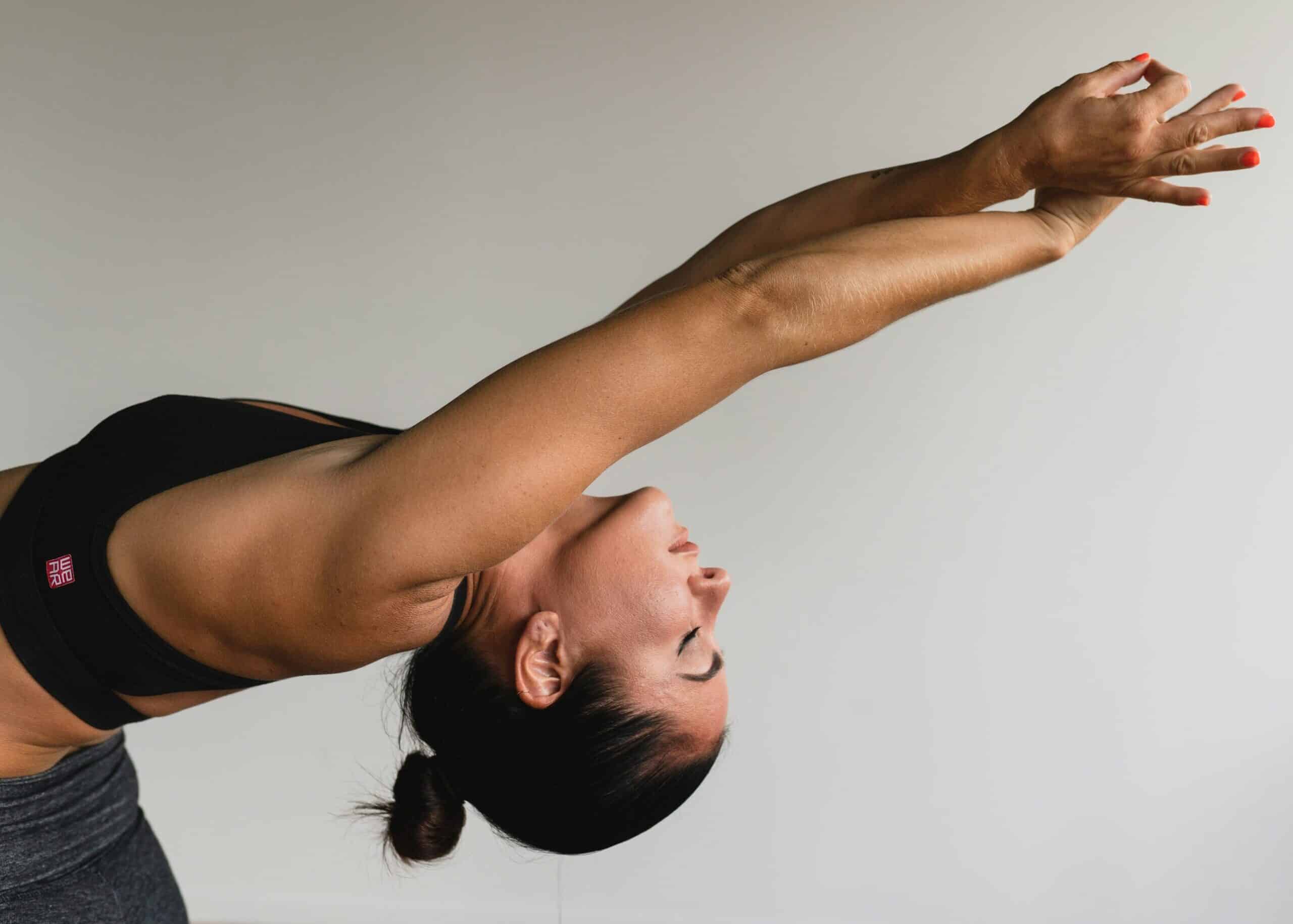
In a world where rapid change is the only constant, where your eyeballs can hardly move two feet without being swayed into intense stimulation, it’s easy to allow these patterns to extend into your spiritual and yoga practice. It can also be easy to forget that a deeper, more lasting form of happiness even exists and that it can be found through your yoga practice.
I have practised yoga for 8 years now but to be honest, for most of the first seven years or so it felt like the benefits of yoga we’re always temporary and fleeting. Perhaps a practice would help me for a time but the natural inclination was for the benefits to slowly wane.
An economist would call this “diminishing marginal utility.” In hindsight this pattern actually made me lose faith in the practices to an extent. What I see now is that it was the pattern of how I was practising that led me to the cycles, not the practices themselves.
This post is a quick, practical guide for attuning ourselves to more lasting forms of happiness. This is something I have begun to experience over the last couple of years so I will speak mostly from my direct experience. I have laid them out somewhat systematically in the sequence that I went through them. I hope these words can be beneficial to you.
1. Make a list of all of the things that you could continue doing happily for the rest of your life. Then, make a list of all the things that you currently spend significant time on that you could not imagine yourself doing for the rest of your life.
For me, my list of things I could continue doing happily for the rest of my life was very short. Think about it how many decisions have you truly made in your life? How many times have you said yes this is right and I can do this forever.
The things I included were a small number of friendships, practicing yoga, continuing to improve my skills as a leader, continuing to become more and more healthy, and continuing to deepen my service to humanity. I also realized that my feelings would often change these things.
Perhaps more notable were the things that this list did not include. When I was being really honest with myself, I couldn’t maintain my romantic relationship, I couldn’t keep working at the job despite the good money I was making, and I couldn’t continue living where I was living. The mere thought of those made me feel wretched inside. The problem was that almost 100% of my time and energy was going towards the things that I did not feel I could do forever. Herein lies the root of the problem.
What I realize now is that it wasn’t necessarily a matter of WHAT I was doing it was a matter HOW I was doing it. For example, there were many days when I did feel like I could be a graphic designer forever (my former job), and other days it felt like I swallowed a hand grenade. When I asked myself why this was happening, it had everything to do with how I was approaching my work, not what I was doing.
On the days where things felt off, I wasn’t giving my body attention, I wasn’t fully present. When I did slow down and added my full self to my work, it felt like I could do it forever. It’s wasn’t a matter of what I was doing but how I was doing it. It’s not always necessary to leave a relationship, sometimes it’s just necessary to change our relationship and approach to it all together to be more authentically ourselves in the situation.
2. When you are practicing Asana or pranayama, get do so in a way that you could maintain the pose or breath practice for a very, very long time.
Here’s a true secret of yoga and meditation – what you experience in your practice is a microcosm of your life. For example, if you find it difficult to stay in a pose for a while, you’ll likely find this pattern happening elsewhere in your life. If you are moving quickly into poses and rushing to get out, I can guarantee you that if you examine your life you will see this pattern playing out in other aspects of life too. The real intention of yoga is to use this microcosm to bring awareness and conscious control to the unconscious aspects of your life.
This is one of the stark differences between the yoga that you practice in India and the yoga that you practice here in the United States. The truth is that the yoga that you know is likely watered down. It’s not a bad thing considering that the watering down was probably necessary otherwise you would`ve never taken interest in it. This, of course, is because if a yoga studio opened and had students hold poses for 10 minutes, no one would come.
Yoga in the United States to me always feels like it’s in a rush to get somewhere. Even in spiritual practice, it can be easy to get caught up in modes of practice that give us temporary relief. For example, let’s say you learn a new Asana sequence. If you can only hold the pose for 10-20 seconds, this means you are training your body to push itself beyond its limit, which is a microcosm of how you are performing many other activities in your life.
When you begin holding poses and practices longer, your body begins to realign to become more comfortable, and you will find yourself sinking into this level of comfort in everything you do. You will find yourself being able to stay within your job, relationships, and difficult more easily.
3. Moderate (or avoid) the things in life that give you very quick, significant bursts of pleasure and sensation.
Now this one might sound a little bit difficult to hear, and I want to be precise and how I convey this. There is nothing inherently wrong with things that give you quick bouts of pleasure, like sugar, plant medicine, or sex. The problem with them comes when they begin to re-wire our brain, and these patterns show up elsewhere. Again, it’s a microcosm– the way we do one thing is the way we do everything.
I often see people try to avoid this basic reality with complex justifications. The reality is that there are certain, undeniable patterns in the universe. When you plant the seed of a mango tree, a mango tree will always grow. When you subject yourself to instant stimulation and pleasure, your brain WILL BE REWIRED.
If not done incredibly mindfully, things that give us intense stimulation can breed addiction, albeit subtle. Think about it, could you actually go the rest of your life without sugar? Could you actually go for the rest of your life without sex? Probably not. This is the definition of an addiction. Now, that’s not necessarily bad, but it’s important to recognize that they are exerting unconscious influence over you.
Yes, things like plant medicine can play a helpful role on the spiritual path. And it is absolutely not necessary to restrict yourself sexually in order to find lasting happiness. You also don’t need to completely comply with things that are not on the yogic diet such as sugar garlic and onions.
Here is what I have found that works for me: The key here is to move slowly into any experience with heightened pleasure and do so incredibly mindfully. When you move into a heightened and sensual experience slowly, giving yourself time to move into it, and move out of it, it allows your body to integrate it, to fully understand it, and not get fully swayed by it. This is the basis for Tantra.
Continue observing the experience not only during but after. Continue watching how it affects your body and consciousness a week after, 2 weeks after. I’m confident you will build new awarenesses as to how these things actually affect your life. What happens for most people is that they aren’t building this awareness, they wake up weeks later with significant mental, emotional, or health issues, and they have no idea what to attribute it to. It’s impossible to attune to lasting happiness when constantly subjected to these cycles.
4. Accept a teacher or Mentor in your life.
Everyone who knows me knows me at all knows I’m one of the most independent, rebellious people on the planet. If you are like me you have spent most of your life resisting mentors and because it’s more satisfying to do things my way. I see now that this is such an essential aspect of finding reliable happiness.
What occurred to me recently was that in being independent when breaking out of my former dependence, I was simply shifting my dependence on to someone or something new and more favorable at the time. The realization that you are utterly dependent on the ways of thinking and existing of others before you is very impactful that will allow you to be more grounded and choose them more consciously. Your ideas about how to live your life are not yours, you didn’t invent them, they came from those before you. You can, however, recombine them to fit your life.
It is nothing but practical to seek the advice of those who have gone before you. Traditionally in India, this was the role of a guru. However, we don’t typically use the term Guru because it’s not a concept those in the west can easily understand. The institution of having a guru is so fundamentally different than anything that we know.
We in the west have been scared by conventional religion, and have misinterpreted it as something we do as a form of service to them in their human form. That’s not what a true guru is. The guru, in fact, is the exact opposite. They exist in their life in such a way that is of ultimate service to others by showing them how to exist in eternal groundedness and happiness. They are meant to be nothing but an example, and creating a relationship with them paves a path for others.
Yes, it can be difficult to find lasting happiness in this world, but do not be mistaken. It is very possible if you set this as a true intention. Find things you can rely on, eternally, and focus all your time and energy on those. That is what I have found works. They are often hidden, only a tiny whisper, and they take a humble mind to see. Keep looking and I’m confident you will not be disappointed. No journey in this life is more rewarding 🙂














